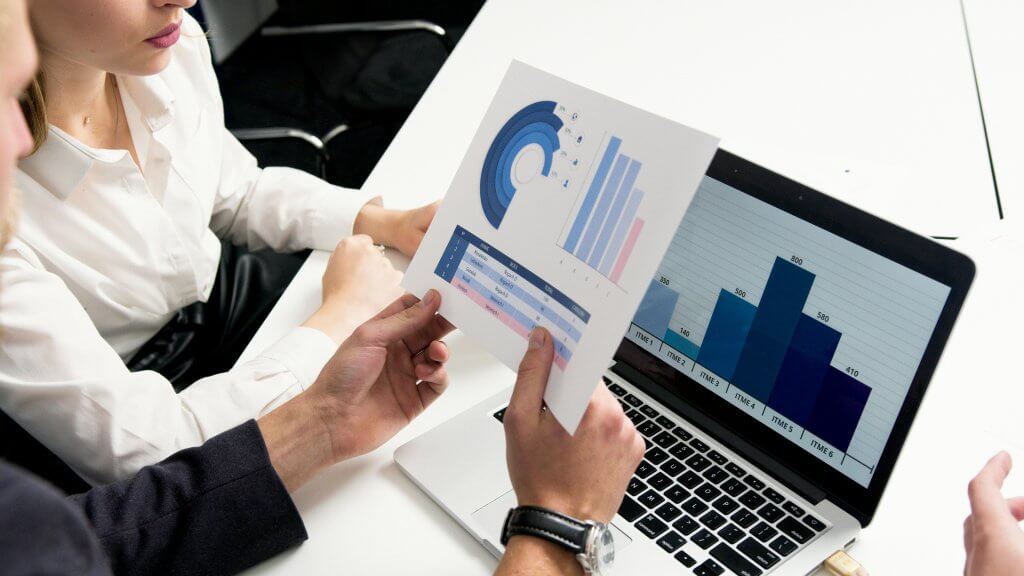AI in corporate wellness is the future – and it’s here now. The timing couldn’t be better, as we’re seeing a shift from company-level-only programming to a preference for total wellness platforms that deliver both company-level and individualized programming.
AI helps companies develop highly personalized wellness programs, and that’s just the beginning. It can also assist with program administration, enhancing effectiveness by boosting employee productivity and satisfaction, reducing turnover, and lowering costs – all key benefits of a well-structured wellness program.
However, AI also brings challenges such as overreliance, privacy and data security concerns, and the potential for algorithmic bias. Here are 15 ways AI is transforming corporate wellness, plus how to address the challenges of AI in the wellness industry.

RELATED: 12 Corporate Wellness Trends
15 Ways AI Can Enhance Corporate Wellness
AI can enhance corporate wellness across all six pillars – physical, mental and emotional, nutritional, occupational, financial, and social – as well as provide administrative support.
Physical Wellness
1. Early Detection
AI can analyze individual health markers to predict disease, enabling life-saving early detection. For example, AI could monitor heart rate, body temperature, and sleep patterns to identify potential health issues.
2. AI Coaching
AI can deliver personalized health coaching tailored to each employee’s unique needs and goals. For example, it could help an employee recovering from an injury by designing a safe and effective workout plan to regain strength.
3. Real-Time Health Tracking and Holistic Monitoring
AI seamlessly integrates with wearables for real-time health tracking and holistic monitoring. For example, it can analyze an employee’s workouts and recovery times, then recommend training regimens to optimize fitness.
Fitness tracking also benefits employers. One corporation saw a 25% decrease in employee sick days after implementing AI-driven fitness tracking (Redress Compliance).
RELATED: 50 Office Fitness Challenges
Mental and Emotional Wellness
4. AI Therapist Chatbot
AI chatbots can serve as virtual therapists, helping employees cope with various issues and develop personalized strategies for success. In addition, AI wellness apps can analyze employee language in emails or wellness campaigns to identify subtle signs of stress, then provide a series of guided questions that can help individuals recognize imbalances and, if needed, recommend professional support.
In fact, an AI chatbot could be more effective than in-person therapy: 68% of people would rather talk to a robot than their manager about stress and anxiety at work, and 80% are open to AI therapy (Oracle). Moreover, people who use AI therapy chatbots experience 64% greater reduction in depression symptoms (World Economic Forum).

5. Individualized Guided Meditation
AI can provide guided meditation sessions tailored to each employee’s specific needs, whether for stress relief, focus, or better sleep. It can even analyze mood, stress levels, and previous sessions to adapt in real-time for a more effective and customized experience.
6. Real-Time Stress Reduction
AI can monitor for signs of stress and intervene in real-time. For example, AI-powered tools for employee wellness could notice when an employee’s tone in emails suggests frustration, then it could recommend a brief guided meditation session to help them reset.
AI in wellness could even save lives. A study found that an AI algorithm could predict suicide attempts within a week with 92% accuracy and within two years with 85% accuracy (National Library of Medicine).
RELATED: How to Improve Mental Health in the Workplace
Nutritional Wellness
7. Diet Analysis
AI can help employees analyze their diets to identify good habits and areas that could use improvement.
For example, employees could upload meal photos to an AI-powered chatbot. The chatbot could track their dietary habits and identify strengths (such as eating plenty of leafy greens) and weaknesses (such as too much processed food). It could then recommend simple adjustments for healthier nutrition.
8. Meal Plans and Schedules
AI can also create individualized meal plans, acting as a virtual nutritionist. This is particularly helpful for those with dietary restrictions and allergies.
For example, an employee who just learned their child has a food allergy could use AI to meal plan safely as they learn more about the allergy.

RELATED: 13 Ways to Boost Nutrition in the Workplace
Occupational Wellness
9. Burnout Prevention
AI can monitor employee health markers and use predictive analytics to identify early signs of employee burnouts. For example, AI can analyze work hours, task completion time, communication and sentiment, physiological factors such as heart rate variability to predict burnout and intervene.
One company used AI to monitor employee stress, then intervened to reduce burnout rates by 30% (Redress Compliance).
10. Task Prioritization and Scheduling Assistance
AI can also help employees manage their schedules, helping to organize their workdays without overwhelming them.
For example, an AI-driven calendar assistant could analyze an employee’s workload and automatically schedule work sessions, meetings, and breaks to boost efficiency and productivity without work overload.
RELATED: 13 Office Wellness Ideas to Improve Employee Productivity
Financial Wellness
11. Financial Goal Planning
AI platforms can assist with financial goal planning, helping employees create individualized and realistic goals to increase savings, reduce debt, and plan for retirement.
It can also help employees ensure they’re maximizing their benefits packages. For example, an AI financial wellness platform could notify employees if they’re missing out on an employer match for retirement contributions.
12. Budgeting
AI can help employees create budgets that achieve their goals. For example, AI can analyze employee income and expenses, debts, savings goals, and retirement goals to ensure they’re putting enough money back for retirement.

RELATED: Guide to Financial Wellness Programs in the Workplace
Social Wellness
13. Foster Social Connections at Work
AI can serve as a personal communication coach, suggesting ways to word emails more diplomatically to defuse or prevent conflict (Deloitte). It can also match colleagues for mentorship or coffee chats by analyzing interests, roles, and goals.
14. Identify Social Withdrawal
AI can monitor how employees interact and collaborate to identify signs of social isolation, then prompt administrators to intervene (Deloitte).
For example, an AI wellness app might flag when an employee stops participating in team meetings and collaboration tools, then alert a manager to check in with the employee.

RELATED: 28 Corporate Wellness Ideas and Activities
Administrative Support
15. Administrative Support
AI can provide interactive support for wellness program administrators. For example, it can walk them through setup, explain how various tools are used, or help them find and use program resources.
AI can also be used for engagement tracking and as a recommendation engine. It can track benefits usage, engagement rates, popular incentives, and user feedback to help administrators design programs that continually meet company goals and needs, ultimately improving wellness initiatives and outcomes over time.
RELATED: Wellness Program Administrator: The Top 10 Primary Duties
Challenges of AI in Corporate Wellness
Here are three challenges companies must address when introducing AI into their wellness programs.
1. Overreliance on AI
AI should be a tool that supports your wellness efforts, not replaces them. You still need humans to design programming, make important decisions, and to keep employees engaged. Thus, it’s important to avoid overreliance when implementing AI for wellness companies.
2. Algorithm Bias
Make sure your algorithm doesn’t have biases that could negatively impact the employee experience. There are multiple ways bias can be unintentionally introduced in AI wellness platforms, including:
- Training data: For example, if an AI wellness app is trained on data from younger individuals, it might not provide suitable recommendations for older adults
- Underrepresented populations: For example, the algorithm might learn to recommend high intensity workouts that are effective for some populations, but not recommend low-impact workouts for others, such as people with joint pain
- Measurements: For example, if an algorithm uses factors such as BMI to measure health without considering other factors such as muscle mass and metabolism
- Developer bias: For example, developers could unintentionally program algorithms with their personal biases
It’s important to use diverse, representative datasets, apply fairness-aware machine learning techniques, conduct regular bias audits, follow ethical principles, allow user feedback, and – most importantly – involve human oversight for any AI wellness solution.

3. Privacy and Security
Privacy and security are paramount for AI in the wellness industry, especially when you expect employees to share personal and health information. Personal privacy, data security, and compliance (HIPAA) are critical considerations.
At WellSteps, our AI Insights tool focuses on security. It ensures data is de-identified (by removing any personal identifiers from data sent) and never shared outside of our system.
AI is transforming employee wellness with real-time insights, highly personalized programming, and intuitive administrative support. However, ethical implementation is crucial to ensuring these advancements truly benefit employees. By blending AI-driven innovation with human oversight and the expertise of a trusted wellness partner like WellSteps, you can build a program that is both effective and responsible – enhancing employee health, wellness, and productivity.
| Get Started with Our AI-Driven Wellness Platform AI can augment your wellness program, but you still need a framework for success. WellSteps has AI tools that work with our proven platform, which integrates company level and individualized solutions across all six pillars of wellness. Security and privacy remain at the core of WellSteps’ AI integration. Our AI-powered tools, including AI Insights for users and the AI bot for administrators, are designed with data protection in mind. Personal identifiers are removed before any data is processed, ensuring that all AI interactions remain secure and confidential. Whether it’s providing users with personalized wellness recommendations or helping administrators navigate program management, WellSteps is committed to using AI responsibly – enhancing wellness while safeguarding privacy. See how it works – schedule a demo today! |